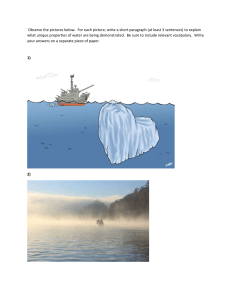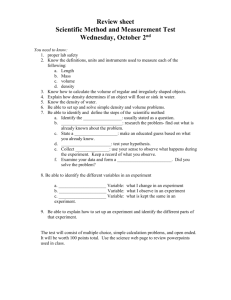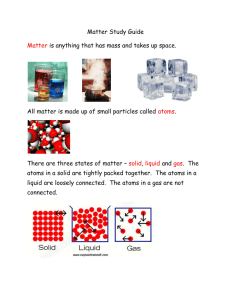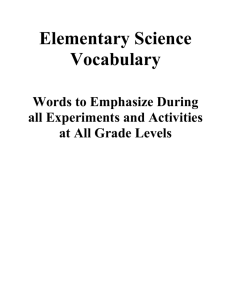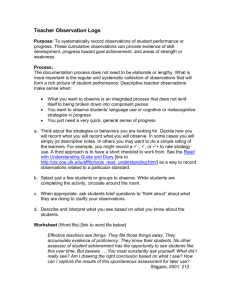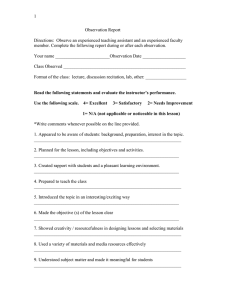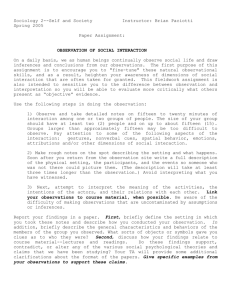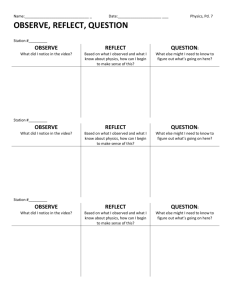Identify-an-Unknown-Substance-Lab
advertisement
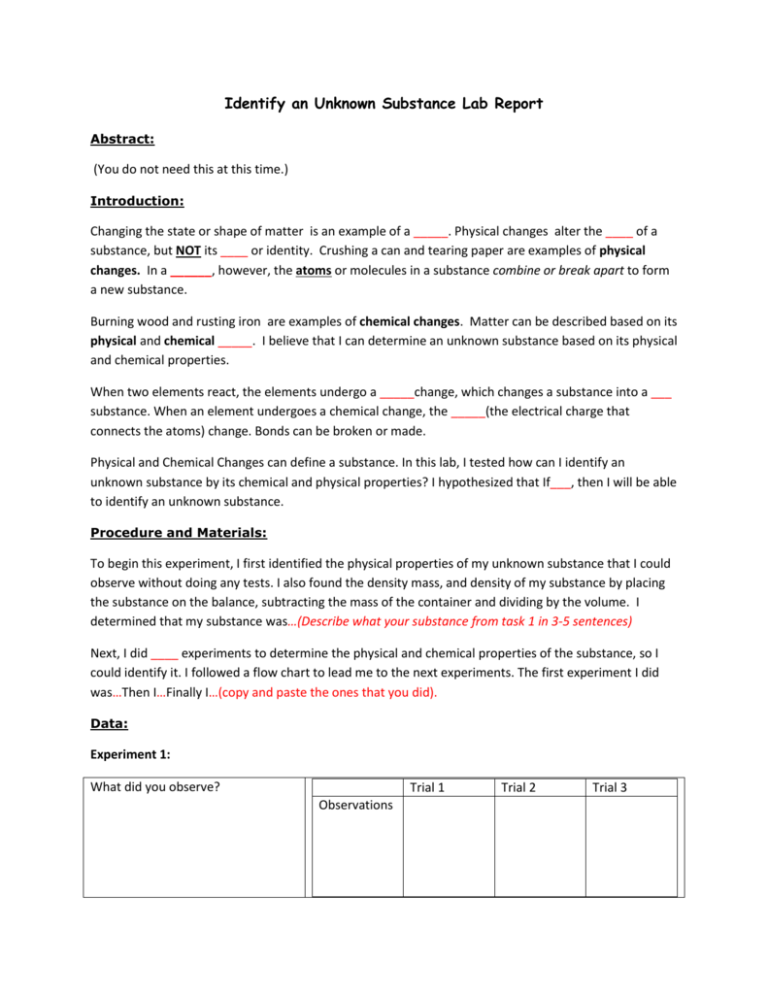
Identify an Unknown Substance Lab Report Abstract: (You do not need this at this time.) Introduction: Changing the state or shape of matter is an example of a _____. Physical changes alter the ____ of a substance, but NOT its ____ or identity. Crushing a can and tearing paper are examples of physical changes. In a ______, however, the atoms or molecules in a substance combine or break apart to form a new substance. Burning wood and rusting iron are examples of chemical changes. Matter can be described based on its physical and chemical _____. I believe that I can determine an unknown substance based on its physical and chemical properties. When two elements react, the elements undergo a _____change, which changes a substance into a ___ substance. When an element undergoes a chemical change, the _____(the electrical charge that connects the atoms) change. Bonds can be broken or made. Physical and Chemical Changes can define a substance. In this lab, I tested how can I identify an unknown substance by its chemical and physical properties? I hypothesized that If___, then I will be able to identify an unknown substance. Procedure and Materials: To begin this experiment, I first identified the physical properties of my unknown substance that I could observe without doing any tests. I also found the density mass, and density of my substance by placing the substance on the balance, subtracting the mass of the container and dividing by the volume. I determined that my substance was…(Describe what your substance from task 1 in 3-5 sentences) Next, I did ____ experiments to determine the physical and chemical properties of the substance, so I could identify it. I followed a flow chart to lead me to the next experiments. The first experiment I did was…Then I…Finally I…(copy and paste the ones that you did). Data: Experiment 1: What did you observe? Trial 1 Observations Trial 2 Trial 3 Experiment 2: What did you observe? Trial 1 Trial 2 Trial 3 Observations Experiment 3: Trial 1 Trial 2 Trial 3 Observations Results: In the first experiment I found that my substance… In the second experiment I learned that my substance… In the third experiment I learned that my substance … Discussion/Conclusion: Answer the following questions in paragraph form. Each paragraph should have 3-5 sentences and you should have at least 3 paragraphs. 1. What were the trends in your data? What physical and chemical properties did you observe? 2. What can you infer from the trends in your data? What is the name, chemical formula and electron dot structure if your compound was an ionic compound (metal and non-metal)? 3. Why do you think that you got your results? Why does your substance have the properties that you found? 4. How certain or confident are you that you have correctly identified your unknown substance? Why? 5. What are some sources of error or uncertainty in your experiment? (For example, did you do enough trials for each experiment? Where there other variables that could have affected your data? Did you use precise measurements for everything? Were there any other mistakes that you made? Did you have to go back and start over again?) 6. If you could do more tests on your unknown. What would you test? What other properties would you investigate?
